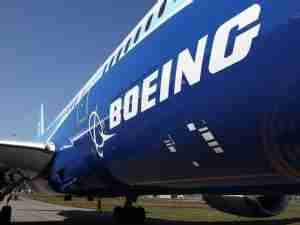China’s Big Three Airlines Take $2.5 Billion Currency Hit
By: | Mar 30 2016 at 12:24 PM | Air Cargo
China’s Big Three state-owned airlines combined suffered about $2.5 billion in foreign-exchange losses last year after the country unexpectedly devalued the yuan in August, squeezing passenger yields and limiting profit gains from declining oil prices.
Net income at China Southern Airlines Co., Asia’s largest carrier by passengers, more than doubled to 3.7 billion yuan ($571.2 million), while China Eastern Airlines Corp.’s profit climbed 33 percent to 4.5 billion yuan. Both fell short of the average analyst estimates—3.9 billion yuan and 5.3 billion yuan, respectively—compiled by Bloomberg. Air China Ltd.’s net income rose 83 percent to 7.06 billion yuan, beating an estimate of 6.78 billion yuan. The companies released separate statements to the Hong Kong exchange Wednesday, based on international accounting standards.
Foreign-exchange losses skyrocketed after the yuan last year recorded its biggest annual loss since 1994, sliding 4.5 percent, after the devaluation by China’s central bank. That triggered volatility in currency-exchange markets, creating uncertainty for airlines whose aircraft purchases are denominated in dollars. Though the Chinese carriers don’t hedge against big swings in fuel prices like Cathay Pacific Airways Ltd. and Singapore Airlines Ltd. do, foreign-exchange losses limited the airlines’ ability to fully reap the cost benefits of crude-oil prices that sank to their lowest in more than a decade.
Balancing Act
The results underscore the tricky task ahead for Chinese carriers, which must juggle growing air travel demand at home and intense regional competition. There’s also the prospect of more yuan volatility as Chinese leaders come under pressure to devalue the currency as the world’s second-largest economy slows.
Air China said its foreign-exchange loss jumped more than 133 times to almost 5.2 billion yuan in 2015. Shanghai-based China Eastern’s ballooned to nearly 5 billion yuan from 203 million yuan in 2014, while Guangzhou-based China Southern’s climbed to about 6 billion yuan from 292 million yuan. The country’s fourth largest carrier, Hainan Airlines Co., last week said that its losses amounted to 1.87 billion yuan, 250 times more than a year earlier.
The airlines have responded by cutting their dollar debt. China Southern slashed its by about 40 percent by the end of 2015 from a year earlier, though dollar debt was nearly 62 percent of its total. Air China, which cut its liability by more than 8 percent, still had 73.5 percent of its debt in dollars at the end of last year. The Beijing-based carrier said Wednesday that it plans to issue as much as 12 billion yuan in bonds with a maturity of not more than five years. China Eastern said it brought its percentage of dollar debt down to 53 percent at the end of last month.
Yields Drop
Passenger yields, the money earned from carrying travelers for each kilometer, declined for all three carriers, falling 6.7 percent to 0.56 yuan for Air China, 8.4 percent to 0.56 yuan for China Eastern and 8.6 percent to 0.53 yuan for China Southern, according to the companies’ filings. That compares with a 11 percent slide for Cathay Pacific.
The decreases were despite fuel costs falling about 30 percent on average for the three state-owned carriers last year. Total capacity rose 11 percent for Air China, 13.2 percent for China Eastern and 12.3 percent for China Southern. International routes saw the biggest capacity increases, with China Southern increasing 30.7 percent and China Eastern 24.3 percent.
Air China filled 79.9 percent of its seats, almost unchanged from a year earlier. China Eastern filled 80.5 percent, up from 79.5 percent, while China Southern filled 80.5 percent, up from 79.4 percent.











